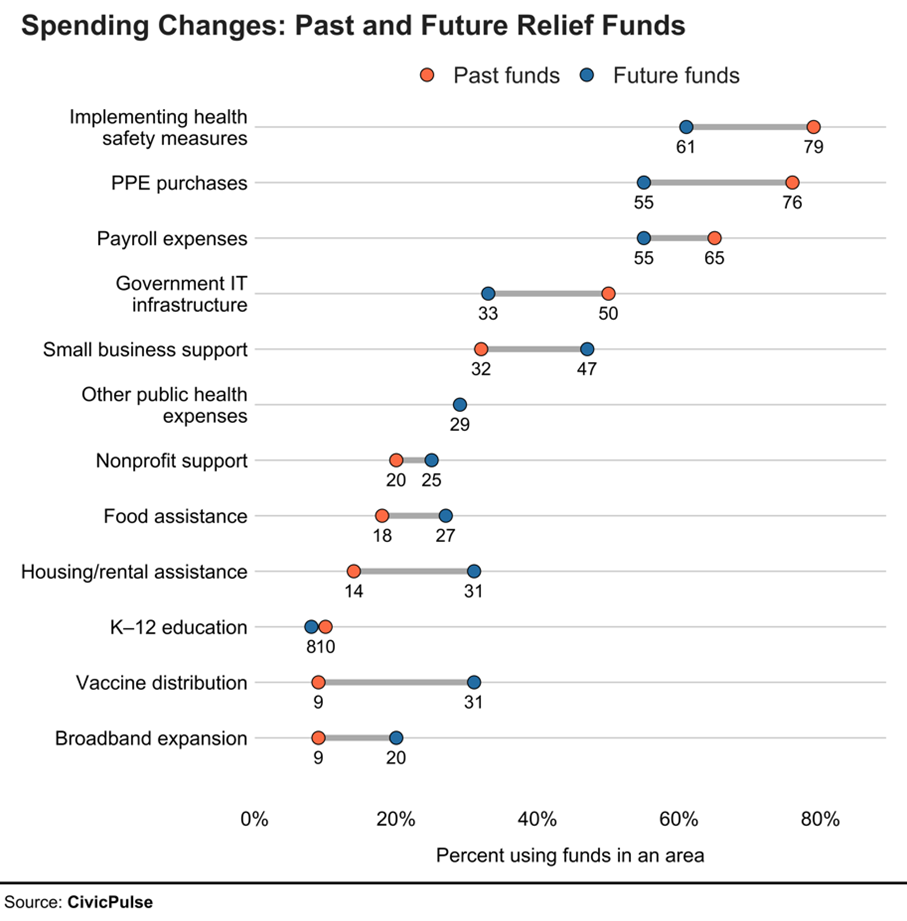How Will Local Governments Spend Biden’s Relief Funds? New Evidence from CivicPulse Reveals Priorities from Local Officials.
Last month, a $1.9 trillion relief bill was signed into law that includes $350 billion in direct aid to state and local governments. A new CivicPulse survey shows how local governments see changing priorities with billions of dollars in new relief funds now headed their way. When asked how they would use future relief funds, the majority of local government officials indicated the need for covering payroll, paying for implementation of public health safety measures, and purchasing PPE. Many government officials also indicated that they would be likely to use new funding to support small businesses and cover the costs of vaccine distribution.
The survey, the latest in a partnership between CivicPulse and Stanford University’s Bill Lane Center, surveyed 494 local government officials from across the country in January-February 2021. The survey included chief appointed officials, such as county and city managers, as well as top elected officials and governing board members from a representative sample of counties, municipalities, and townships with populations of 1,000 residents or more.

One finding from the survey demonstrates how important the previous support was to local governments struggling to fill their budget deficits. “With billions of dollars being given to local governments to help them with their budget shortfalls, we now have a sense of the high-need areas where these funds will be spent,” said Nathan Lee, Managing Director of CivicPulse and a professor in the Department of Public Policy at the Rochester Institute of Technology. “So much attention has been given to how this new round of relief funding will affect the state budgets, but those conversations often ignore the tens of thousands of local governments across the country that are also looking at budget deficits and have far fewer resources available to close those gaps.”
More information on the survey and results can be found in the full report.



